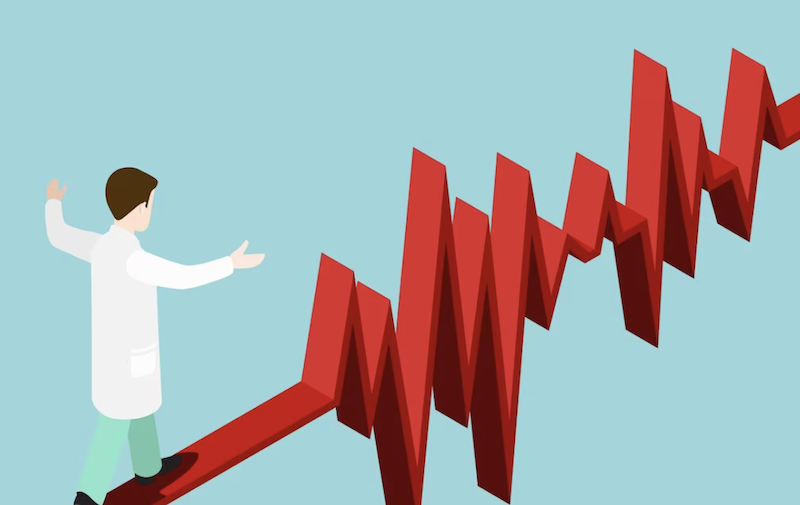Forex trading offers exciting opportunities, but it is not without risks. Understanding leverage, market volatility, interest rate risks, and other potential hazards, as well as knowing how to mitigate them, is essential for anyone venturing into this market. By using tools like stop-loss orders and practicing sound risk management techniques, you can better prepare yourself for the challenges in the forex trading world.
Here are some of the key Risks in Forex Trading:
Leverage Risk
Leverage allows traders to control a large position with a relatively small amount of capital. While it increases the profit potential, it also magnifies the risks involved. A small movement in the market against your position can result in substantial losses that exceed your initial investment.
Market Volatility
The forex market is incredibly volatile and subject to numerous factors, ranging from economic indicators to geopolitical events. Currency prices can change abruptly, leading to sudden losses if you’re unprepared.
Interest Rate Risk
Interest rates set by central banks, like the Federal Reserve in the United States or the European Central Bank in the Eurozone, have a direct impact on currency values. A change in interest rates can affect the demand for a particular currency, thereby altering its value against other currencies.
Liquidity Risk
While the forex market is known for high liquidity, meaning that large volumes of currency pairs are bought and sold daily, there may be times when the market is less liquid. Reduced liquidity can lead to “slippage,” where your order is executed at a different price than expected, resulting in losses.
Political and Economic Risk
Political events, such as elections, and economic events, like the release of GDP figures, can significantly influence currency value. Unpredictable events can suddenly shake up markets and create losses for traders.
How to Manage risks involved in forex trading:
Use Stop-Loss Orders
A stop-loss order is a tool that allows you to specify the maximum amount you are willing to lose on a trade. Once the market reaches this predetermined level, your trade is automatically closed, thereby capping your losses. However, keep in mind that in very volatile markets, slippage can occur.
Limit Leverage
Though using leverage can amplify gains, limiting the amount of leverage can protect you from massive losses. As a beginner, it’s advisable to start with lower levels of leverage until you gain more experience and confidence.
Diversification
Don’t put all your eggs in one basket. By trading different currency pairs or even venturing into other asset classes, you can offset losses in one trade with gains in another.
Regular Monitoring and Analysis
Keep an eye on economic calendars, news, and other indicators. Regularly analyze market conditions and be ready to adapt your strategies accordingly.

Risk-Reward Ratio
Understanding the risk-reward ratio is an essential facet of sound trading, not only in Forex but in any financial market. This ratio outlines the potential profit you could make in relation to the possible loss. It’s a benchmark used to evaluate the feasibility of a trade. For instance, risking $100 to gain $10 would give you a risk-reward ratio of 1:0.1, which is far from advisable. On the contrary, a more balanced ratio like 1:3 suggests that the potential upside is at least three times greater than the downside, reducing your risk substantially. This way, even if you lose on some trades, a single winning trade could potentially cover multiple losses and still leave you with a profit.
Coupled with risk-reward considerations, using a demo account is another invaluable tool for traders, especially those who are new to Forex. A demo account allows you to simulate trades in real-time market conditions without putting actual money at risk. It serves as a training ground where you can practice your trading strategies, learn how to read market indicators, and become comfortable with the trading platform. This initial practice helps you better understand market behavior and refine your approach before you start trading with real capital. Hence, mastering the concept of risk-reward ratios and utilizing demo accounts form a robust foundation for effective risk management in Forex trading.
FAQ:
What is leverage risk in forex trading?
Leverage risk allows controlling a large position with little capital, but it magnifies potential losses.
How can market volatility affect forex traders?
Market volatility can cause abrupt changes in currency prices, leading to sudden and significant losses if unprepared.
What is the role of interest rates in forex trading?
Interest rates, set by central banks, directly affect currency values by influencing demand for that currency.
What is a stop-loss order, and how does it work?
A stop-loss order sets the maximum loss you’re willing to take, automatically closing the trade at a predetermined level.
Why is diversification important in forex trading?
Diversification helps offset losses in one currency pair by potentially gaining in another, reducing overall risk.

